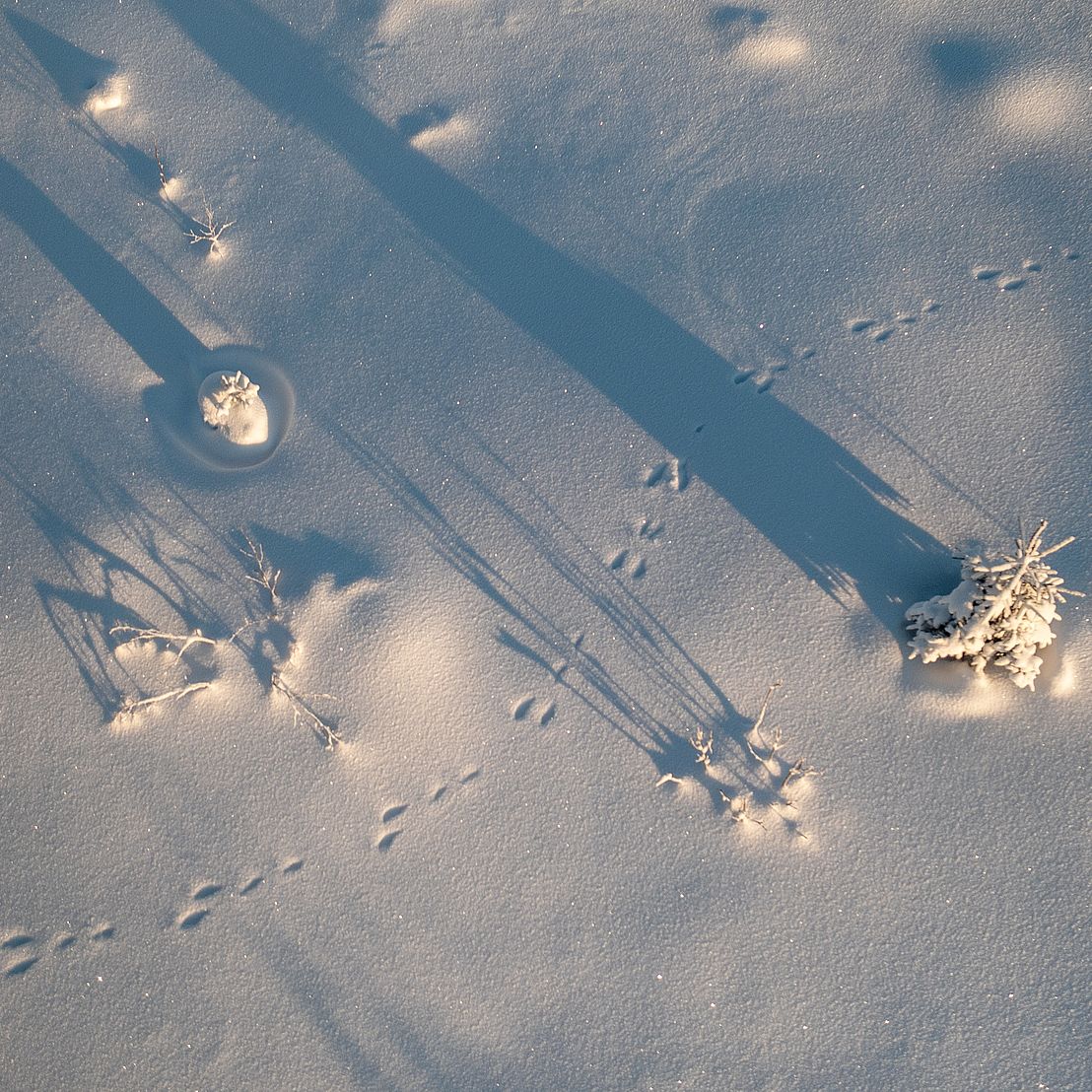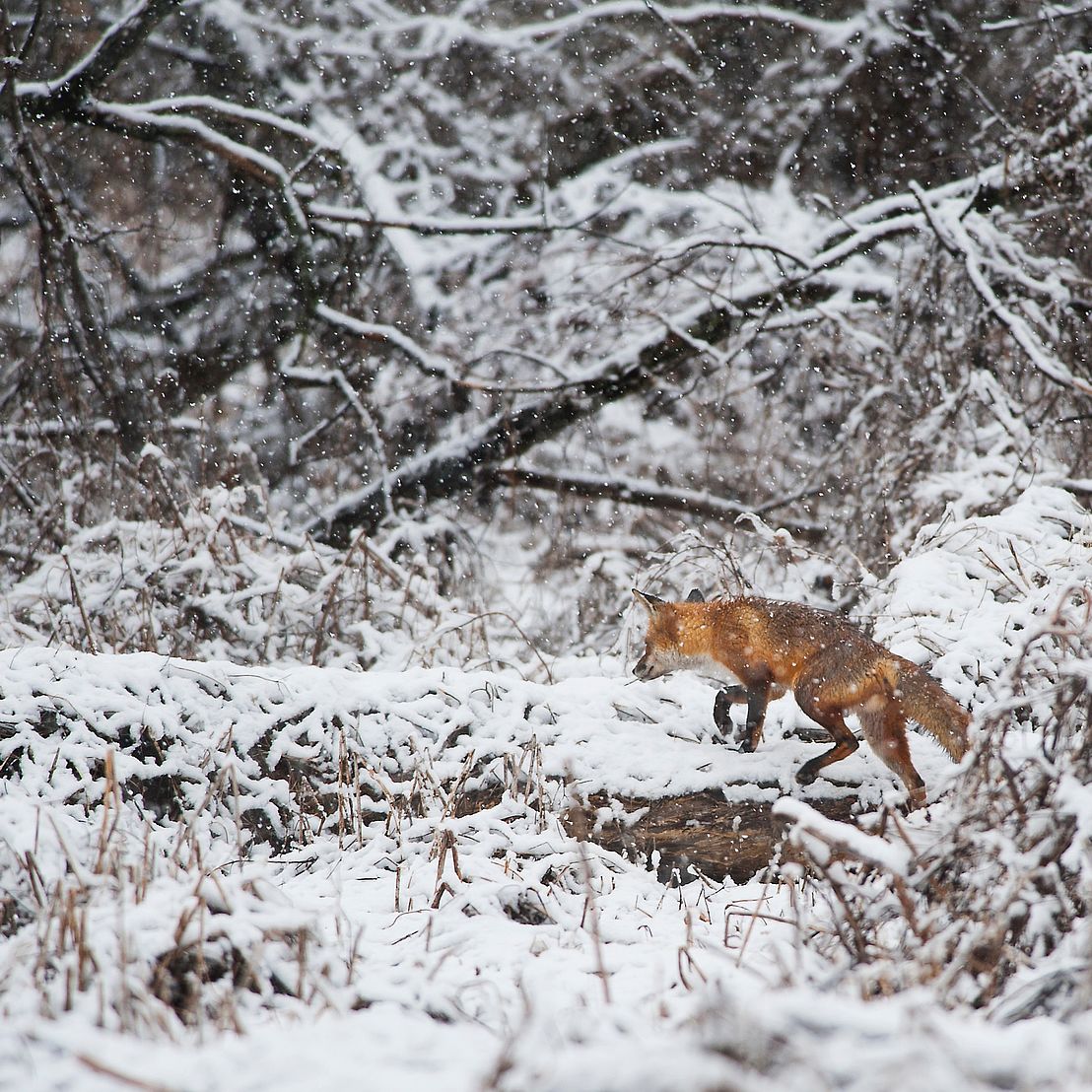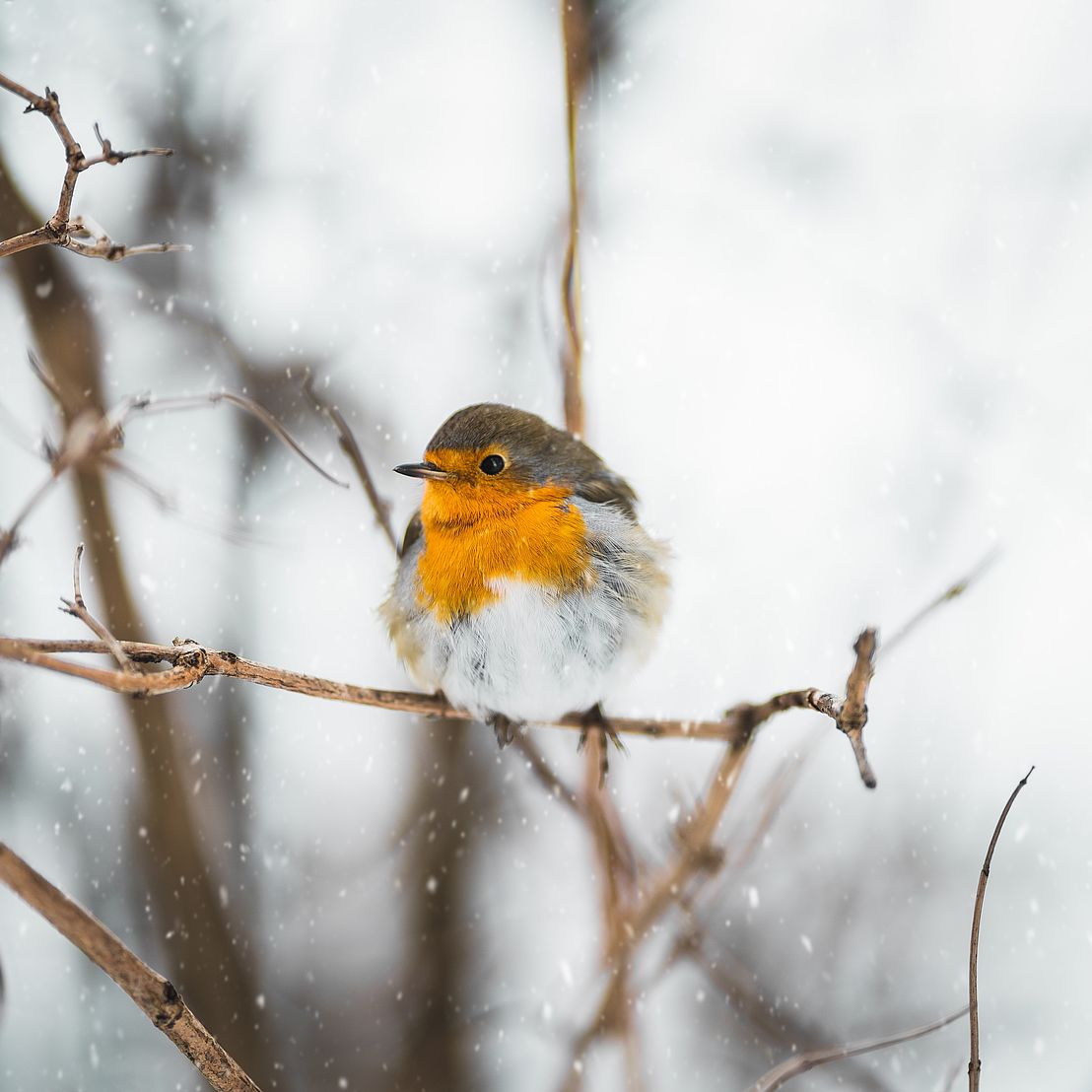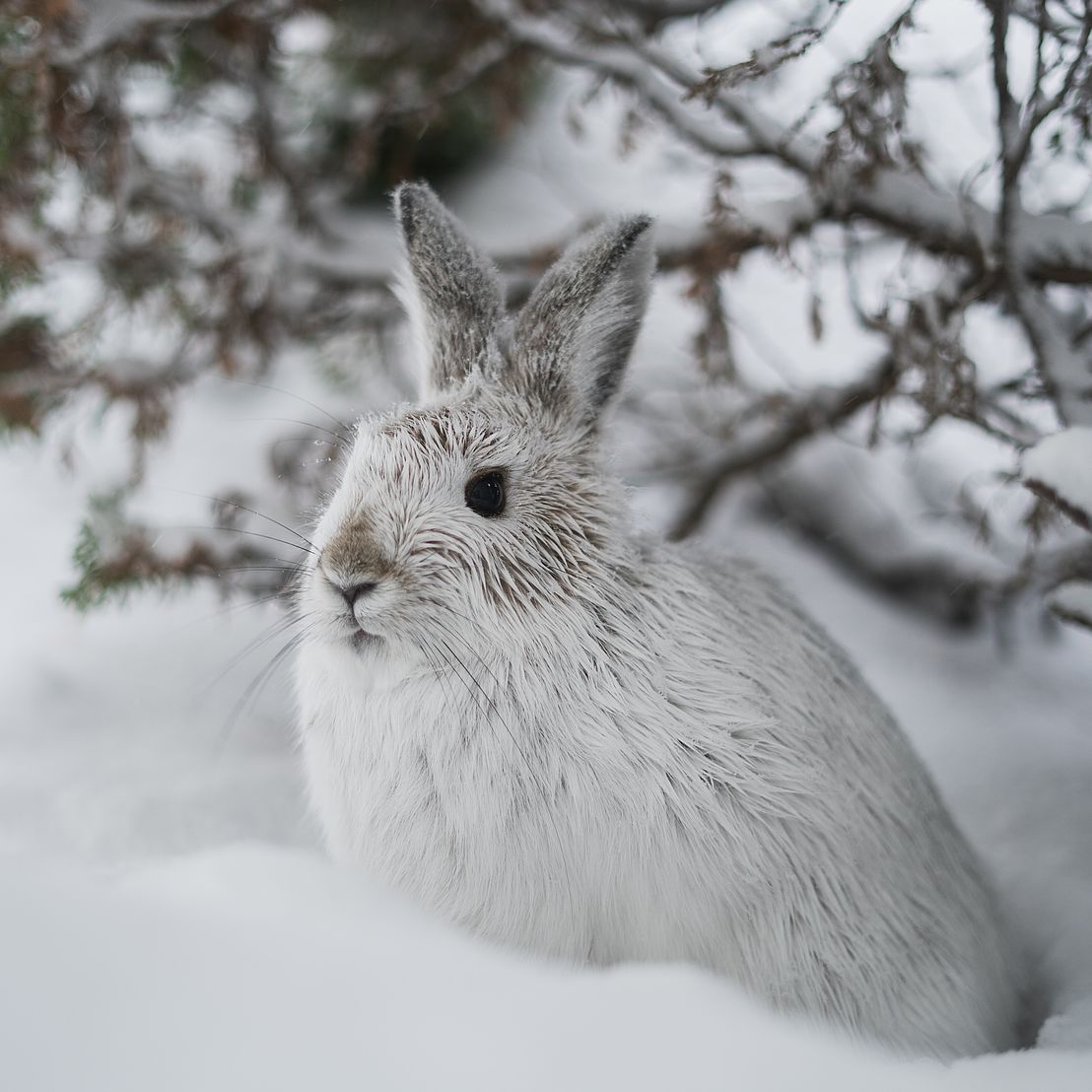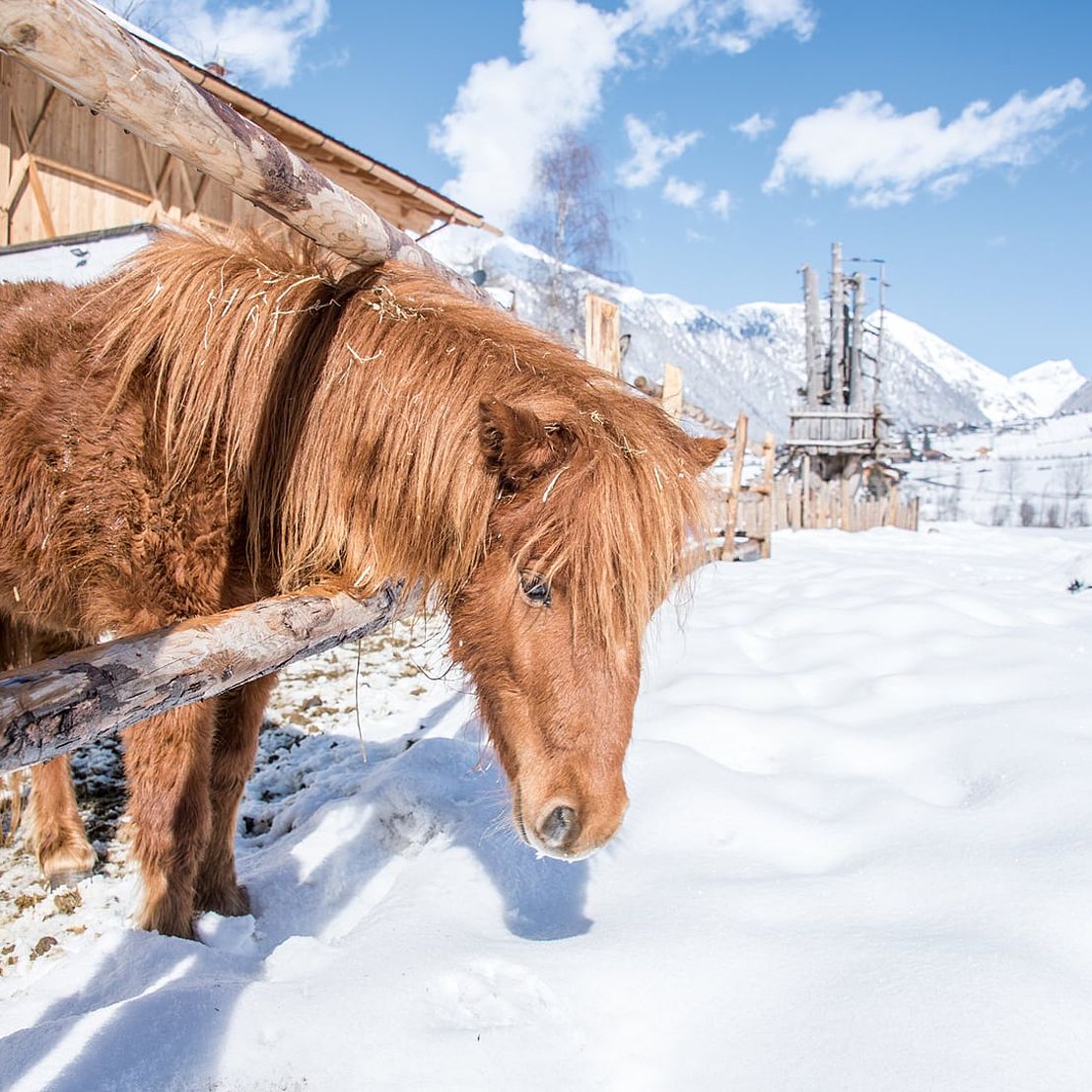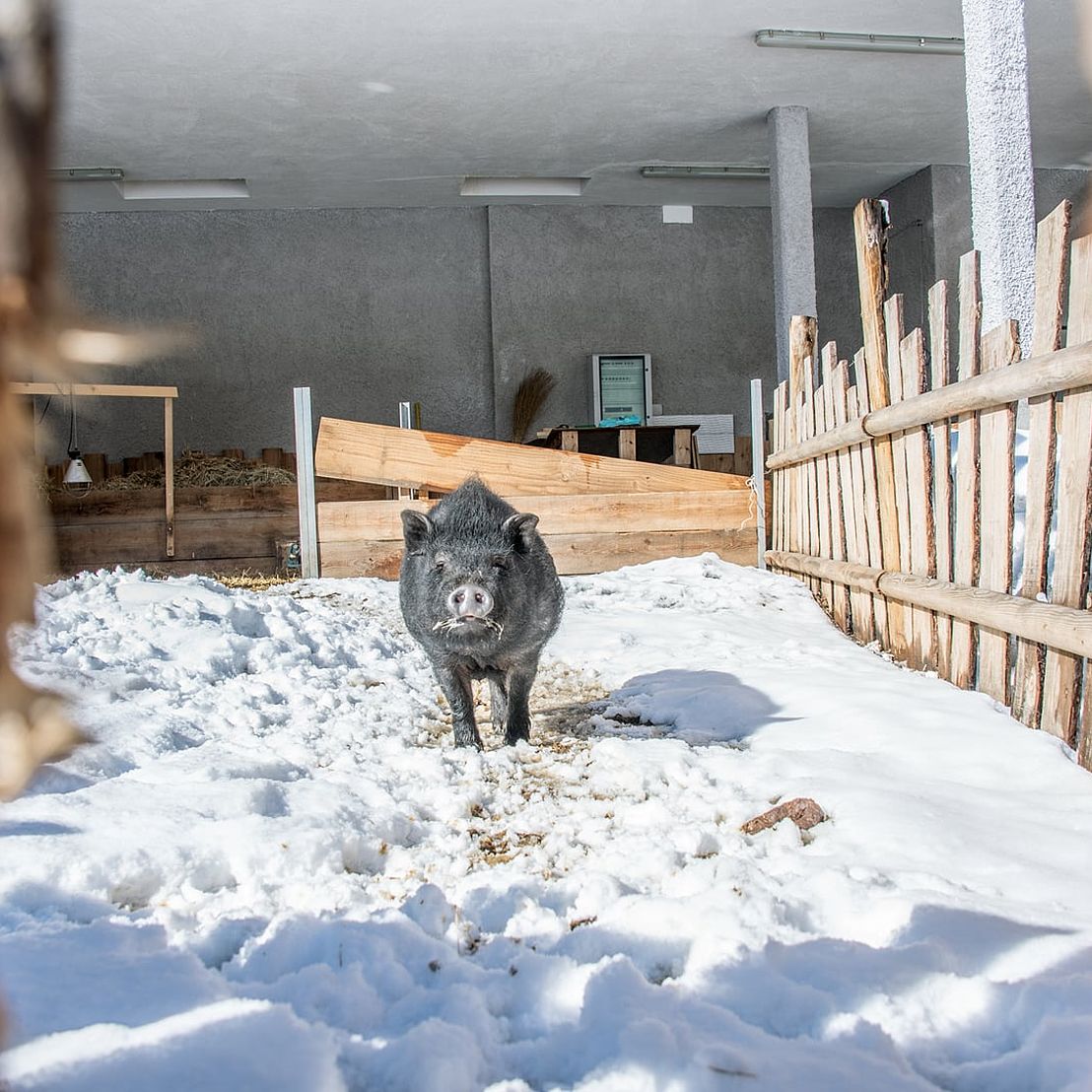We humans have it so good! Sub-zero temperatures, little sun and dense snow flurries can do us little harm. After all, there is electric light, heating and down jackets. And so we can enjoy winter in the mountains to the full. Just imagine: After a great day on the ski slopes, you retreat to your chalet, snuggle up in a warm blanket and watch the snowflakes dance with a fine cup of tea. You just have to be patient and - admittedly - a little lucky: It's not so rare for the animals of the forest to pay a visit to our chalet village. The best proof of this are the various tracks that can be seen in the freshly fallen snow on winter mornings. With a little practice, you will soon know what has been hopping, running or walking there. After all, a rabbit track looks very different from the hoofprints of a deer. This of course brings us to the question: What do forest animals actually do all winter long?
What forest animals do in winter.
Sleep, little animal sleep...
Short days make you tired. Sometimes you want to do the same as the animals and just go into hibernation. But you need to know this: Not all hibernation is the same. Strictly speaking, a distinction is made between hibernation, hibernation and hibernation. "Real" hibernators are, for example, marmots, dormice, bats, hamsters and hedgehogs. These animals have to eat a lot in autumn, because when spring comes again, they have usually used up all the fat they have accumulated. Squirrels, brown bears and badgers go into hibernation. This means that they leave their hiding place from time to time. Most of the time, however, they sleep in their burrows and hollows, their body temperature and heartbeat on the back burner.
Amphibians and reptiles such as frogs, toads, snakes and amphibians go into a veritable torpor.
Off to the south!
Some of our feathered friends leave as early as July, others head south in December. The behaviour of the various native birds is as fascinating as it is multifaceted. While nightingales, cuckoos, swallows and storks spend the winter in warmer climes, blackbirds, thrushes, titmice and finches stay in South Tyrol. The behaviour of starling and robin is particularly interesting. Some of them decide to take a "holiday", while others stay at home.
In search of tracks
Animals such as foxes, hares, deer and stags are also very close to home. They have to forage even in freezing temperatures and high snow. Chamois and ibex are also true survival artists. When a winter is particularly harsh, these four-legged creatures sometimes leave the high mountain ranges and migrate further down into the valley. At this point we would like to ask you one thing: If you encounter wild animals on a winter hike, keep calm and retreat. If the animals get scared and have to run away, it costs them an incredible amount of valuable energy. Who is always happy to be close, petted and given treats in winter and elsewhere? Our farm animals! Why not pay them a visit during your next holiday at Valsegg?
voice
The greatest wonders reveal themselves in small things. We love to linger and take a closer look. The world around our holiday chalets in Alto Adige is full of wondrous tales and we are only too happy to share them with you.
whispers
Honest. Unvarnished. And full of real experiences. Read what other guests have to say about Valsegg here.

